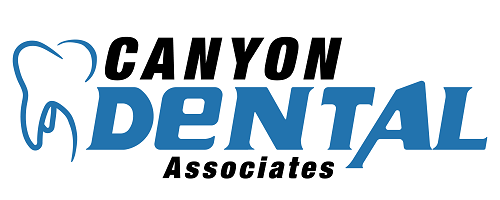Understanding the differences between dental insurance HMO and PPO dental insurance can save you time, money, and frustration when choosing the best option for your oral health needs. Both plans offer benefits but vary significantly in coverage, costs, and flexibility. Let’s explore these differences and learn which plan may be right for you.
Introduction to Dental Insurance Plans
Dental insurance plans are designed to help individuals and families manage the cost of dental care. These plans can be categorized into two main types: Health Maintenance Organization (HMO) and Preferred Provider Organization (PPO). Understanding the differences between these two types of plans is crucial in making an informed decision when choosing a dental insurance plan. In this article, we will delve into the details of HMO and PPO dental insurance plans, including their benefits, limitations, and network restrictions.
What is PPO Dental Insurance?
A dental PPO (Preferred Provider Organization) plan offers flexibility by allowing patients to choose in-network or out-of-network providers. Dentists who participate in PPO plans agree to provide services at negotiated rates, offering substantial savings on treatments like teeth cleanings, root canals, and more.
With PPO dental plans, your savings average between 20-30% on dental procedures. However, PPO plans typically come with higher premiums and an annual maximum limit, often ranging between $1,000 and $2,000. These plans also include out-of-pocket costs like deductibles, depending on your specific dental insurance plan.
Benefits of PPO Plans:
-
Freedom to choose dentists: Patients can see any dentist or specialist, whether in-network or out-of-network. Dental PPO plans offer this flexibility, making them a popular choice in the commercial dental market.
-
A larger network of providers: PPO insurance plans often feature a wide selection of dental offices to choose from.
-
Coverage for preventive care: Routine teeth cleanings, exams, and x-rays are often covered with minimal copays.
What is HMO Dental Insurance?
A dental HMO plan (Health Maintenance Organization) assigns patients to a specific primary care dentist within the plan’s network of in-network dentists. Unlike PPO plans, HMO plans typically offer lower premiums and emphasize affordable access to dental services by setting fixed fees for treatments.
With HMO dental insurance, patients must visit the assigned dental office for coverage unless they officially request a change. These plans are ideal for routine care, but they may limit access to out-of-network providers and certain specialist care.
Benefits of HMO Plans:
-
Lower premiums: HMO plans are generally more affordable than PPO plans.
-
Comprehensive coverage: Many HMO plans offer full coverage for preventive services like routine exams and basic procedures. These plans are managed by an insurance company, which ensures that patients have access to a network of dentists and a variety of dental services.
-
No annual maximums: Unlike PPO dental insurance plans, HMO dental coverage often has no cap on benefits throughout the year.
Network Restrictions
Network restrictions refer to the limitations imposed by dental insurance plans on the choice of dentists and specialists. HMO plans typically require patients to select a primary care dentist within the insurance’s network, while PPO plans offer more flexibility in choosing a dentist or specialist. With a PPO plan, patients can see any licensed dentist, in or out-of-network, although out-of-network services may incur higher copayments or coinsurance rates. In contrast, HMO plans usually do not cover out-of-network services, except in emergencies or with referrals to specialists.
Choosing a Dentist and Specialist
Choosing a dentist and specialist is an essential aspect of dental care. With a PPO plan, patients have the freedom to choose any licensed dentist or specialist, in- or out-of-network. This flexibility allows patients to stick with their trusted, long-time dentist or switch providers whenever they want. On the other hand, HMO plans require patients to select a primary care dentist within the insurance’s network, who acts as a “gatekeeper” for their dental benefits. While HMO plans may have limitations on provider choice, they often encourage regular dental check-ups by clearly defining out-of-pocket costs.
Common Misunderstandings About HMO Dental Plans
While HMO plans promise attractive features such as free exams or $100 crowns, misunderstandings can occur. Many patients assume that dental services like cleanings are fully covered, but this isn’t always the case.
The type of cleaning required depends on the patient’s oral health needs. A thorough exam by a primary care dentist determines whether a standard cleaning, periodontal treatment, or other care is necessary. Insurance representatives often oversimplify this, leading to confusion among patients.
Key Differences Between HMO and PPO Dental Plans
|
Feature |
PPO Dental Insurance Plan |
HMO Dental Insurance Plan |
|---|---|---|
|
Premium Costs |
Higher premiums with more flexibility |
Lower premiums but limited provider options |
|
Provider Choice |
Choose from in-network and out-of-network providers |
Restricted to the plan’s network of dentists |
|
Annual Maximums |
Typically $1,000 – $2,000 limit per year |
No annual maximums |
|
Specialist Care |
Access to specialists without referrals |
Referrals required for specialist care |
|
Out-of-Pocket Costs |
Deductibles and copays apply |
Lower out-of-pocket costs overall |
|
Waiting Periods |
This may apply to certain procedures |
Often no waiting periods |
Waiting Periods
Waiting periods refer to the time frame before coverage begins for certain dental services. Some dental insurance plans, including HMO and PPO plans, may have waiting periods for major services such as crowns, bridges, or dentures. The waiting period may vary depending on the plan and the service. However, some plans may waive the waiting period if patients can prove they were enrolled in a dental plan just prior to their new plan. It is essential to review the waiting periods and coverage limitations before choosing a dental insurance plan.
How to Choose the Right Dental Insurance Plan for Your Needs
Choosing between an HMO or PPO dental insurance plan depends on your priorities. If you prefer flexibility and access to out-of-network services, a PPO plan might be ideal, though it may come with higher premiums. If keeping costs low is a priority, an HMO plan can provide affordable dental care with a limited network of providers.
Consider the following factors when making your decision:
-
Do you need specialist care? PPO plans to provide direct access to specialists without referrals.
-
Are you comfortable with one primary dentist? An HMO assigns you to a single dental office for care.
-
What is your budget for dental insurance? PPO plans offer more flexibility but come at a higher cost, while HMOs provide predictable expenses with lower premiums.
Final Thoughts: HMO vs. PPO Dental Insurance
Understanding the differences between HMO and PPO dental plans can help you make an informed decision about your dental insurance coverage. Both plans have their pros and cons, and the right choice depends on your specific oral health needs, budget, and preference for provider flexibility.
If you are in Corona, CA, and need help navigating your dental insurance plan, contact our office today. Our experienced team can assist you in selecting the best coverage option, whether it’s HMO or PPO dental insurance. Call us at (951) 273-0555 to schedule an appointment or learn more about our dental services.


